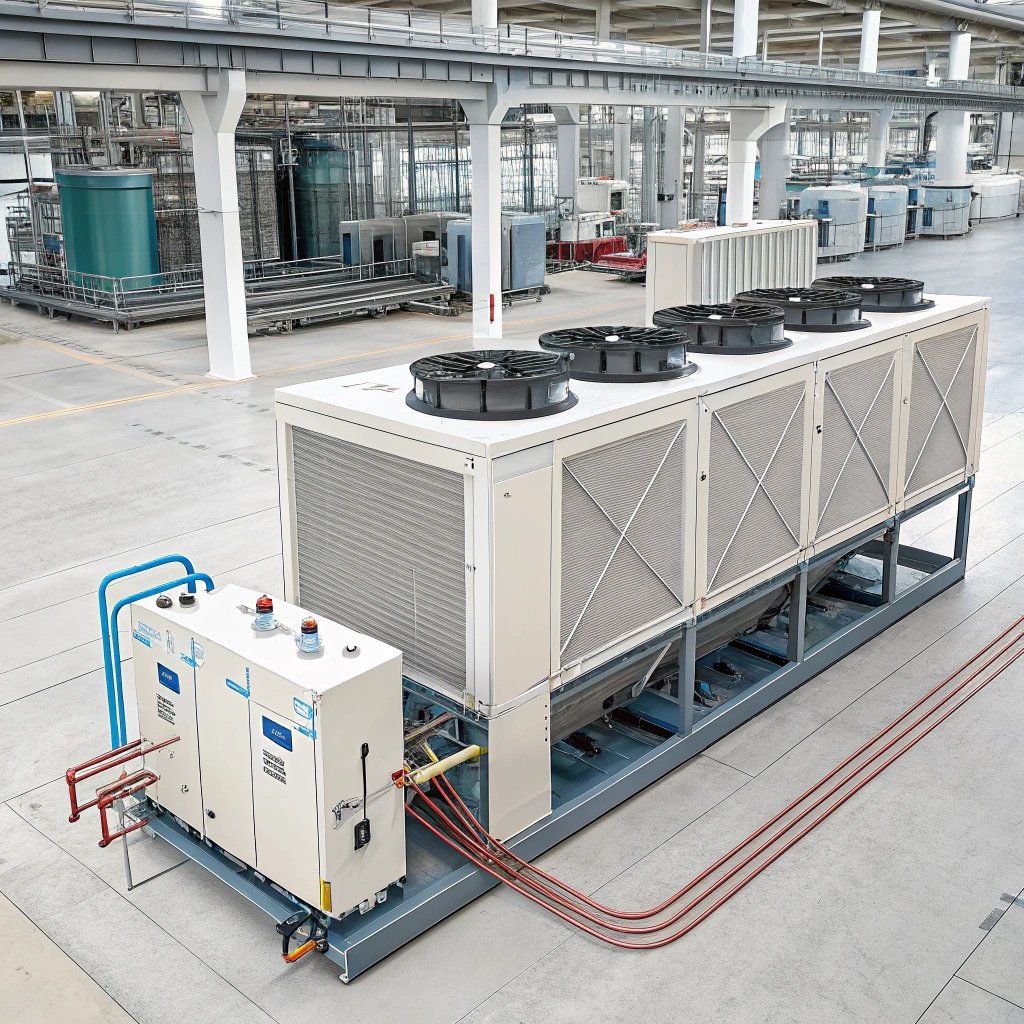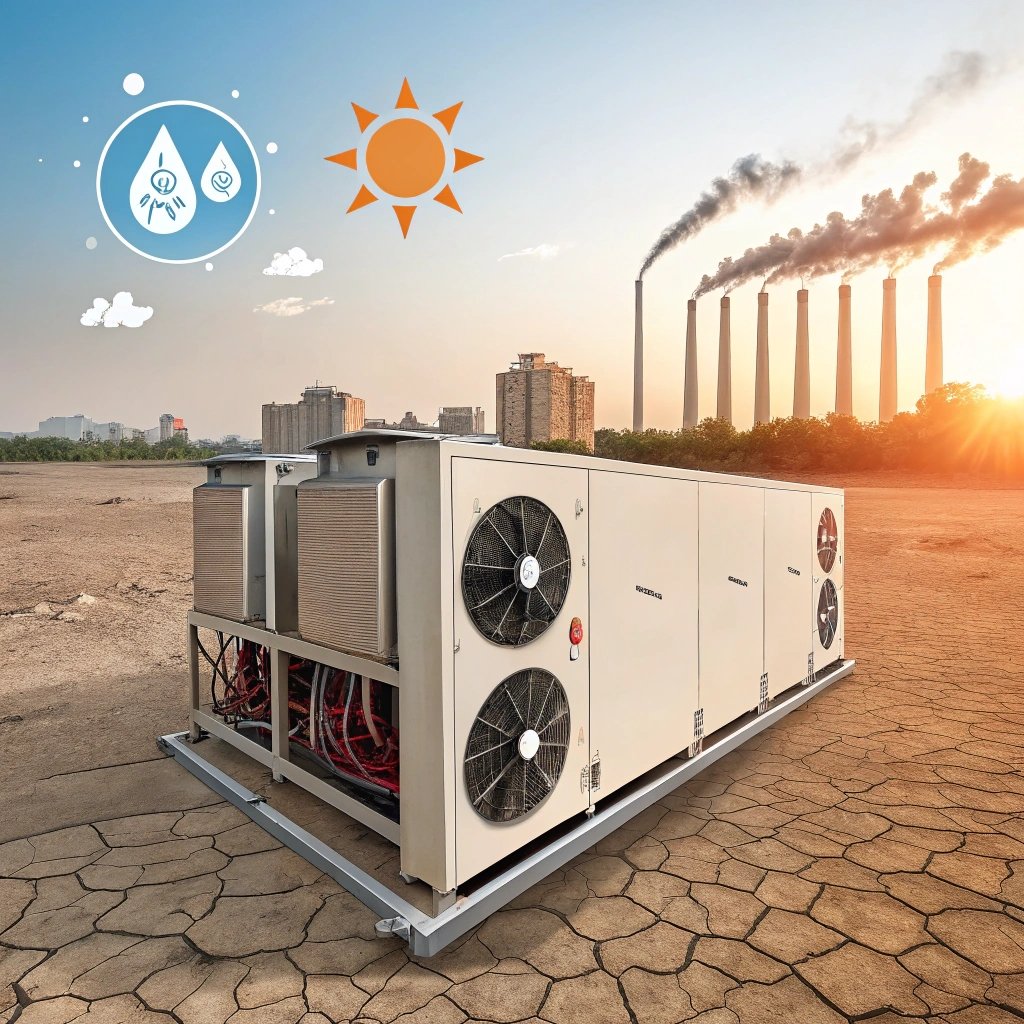What is the refrigeration technology used in the Air Chiller?
% Industrial cooling system in a factory setting, showcasing large machinery with pipes and fans
leading paragraph:
When exploring the world of industrial cooling, the type of refrigeration technology used in air chillers is crucial to understanding their effectiveness. A chiller’s efficiency and reliability depend largely on the refrigeration system it employs.
featured Paragraph:
Air chillers typically use vapor compression refrigeration technology. This system works by circulating a refrigerant through a closed loop, which absorbs and releases heat, effectively maintaining a low temperature in the environment or machinery. It’s one of the most energy-efficient and commonly used systems in industrial cooling.
Transition Paragraph:
To truly grasp how air chillers work, let’s break down the components of vapor compression refrigeration, and how this technology directly impacts industries relying on consistent and efficient cooling.
What are the benefits of using a dual chiller system?
leading paragraph:
In a world where cooling efficiency is paramount, the dual chiller system offers remarkable benefits. If you’ve been considering an upgrade, it’s important to understand how a dual system outperforms traditional single-chiller setups.
featured Paragraph:
A dual chiller system is a configuration where two chillers work in tandem to manage the cooling load. The primary advantages of this system include enhanced reliability, optimized energy consumption, and increased cooling capacity. This solution is widely adopted in industries that require uninterrupted and efficient cooling, such as pharmaceuticals, food processing, and HVAC systems.

Dive deeper Paragraph:
The core advantage of a dual chiller system lies in its redundancy. Unlike a single chiller setup, where failure or maintenance could cause operational disruptions, a dual system ensures that there is always backup. If one chiller experiences a failure or requires service, the second chiller takes over, preventing downtime. This level of reliability is especially critical in industries like pharmaceuticals, where even a short period of elevated temperatures can result in catastrophic losses of products or compromised quality.
Enhanced Redundancy and Increased Reliability
Dual chiller systems bring a significant improvement in reliability. The redundancy built into the system ensures that cooling will continue even if one unit is offline. This is particularly crucial in environments where continuous temperature control is necessary, such as in research laboratories or food storage facilities. A failure in the cooling system can lead to spoilage, product loss, or unsafe working conditions. With a dual chiller system, you don’t have to worry about unexpected downtime disrupting operations.
For example, in the pharmaceutical industry, where temperature-sensitive drugs must be stored within strict temperature ranges, a sudden failure in the cooling system can jeopardize an entire batch of medicine. With dual chillers, one unit can seamlessly take over, ensuring that products are maintained at the correct temperature without interruption.
Optimized Energy Efficiency
While a single chiller system might seem more cost-effective initially, a dual chiller system can lead to greater energy savings over time. This is because dual chillers can work together, distributing the load more evenly and running at optimal efficiency. When a single chiller is overburdened, it may need to operate at full capacity constantly, leading to higher energy consumption and wear on the equipment. By contrast, in a dual system, the workload is divided, preventing any single unit from running inefficiently and consuming excess energy.
Moreover, dual chiller systems can be programmed to operate in various modes depending on the cooling demand. During periods of lower cooling needs, one chiller can be turned off while the other maintains the necessary temperature. When cooling demand increases, both units can work together to handle the load. This flexibility not only optimizes energy use but also extends the life of the chillers.
Extended Equipment Lifespan
Chillers are costly investments, and their lifespan can be significantly affected by how frequently they are stressed. A single chiller system often operates under heavy, continuous load, which leads to faster wear and tear. In contrast, dual chiller systems allow for load sharing, which reduces the stress on each individual chiller. As a result, both units are likely to last longer, requiring less frequent maintenance and reducing the likelihood of expensive repairs.
Moreover, when each chiller operates within its ideal performance range, it’s less likely to encounter mechanical issues or breakdowns. This results in a longer overall service life and a more stable cooling process.
Flexibility in Cooling Capacity and Control
Dual chiller systems offer increased flexibility, which is essential for industries that experience varying cooling demands. For instance, in some production processes, cooling needs fluctuate depending on the time of day or the specific phase of production. A dual system provides the ability to activate only one chiller during periods of low demand, conserving energy and reducing operational costs. Conversely, during peak demand times, both chillers can work together to ensure optimal cooling capacity.
This flexibility also allows businesses to adjust their cooling capacity based on changing environmental factors, like external temperatures or production changes. Additionally, dual systems can be fine-tuned for different operations, offering precise control over the temperature and ensuring consistent results across different sectors.
Cost-Effective Expansion and Upgrades
Another significant advantage of dual chiller systems is that they allow for more cost-effective expansion and upgrades. Rather than replacing an entire cooling system to meet increasing demands, businesses can simply add a second chiller to their existing setup. This modular approach to system upgrades saves on the costs associated with large-scale installations and ensures that the cooling system can grow with the business.
As industries expand or diversify, the need for additional cooling capacity often arises. A dual chiller system provides the flexibility to scale up without the need for a complete overhaul of the cooling infrastructure.
LOOP END.
Conclusion
By using a dual chiller system, businesses benefit from enhanced reliability, energy efficiency, extended equipment life, and flexibility. This makes it a smart choice for industries that require dependable, high-performance cooling solutions.
Insights
In today’s competitive industrial landscape, investing in the right cooling technology is crucial for operational success. Dual chiller systems offer a range of benefits that go beyond simply keeping temperatures low—they ensure business continuity, optimize energy consumption, and provide the flexibility needed to scale operations efficiently. Understanding these advantages helps businesses make informed decisions, ensuring long-term performance and cost savings.




